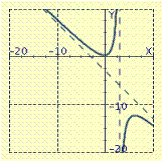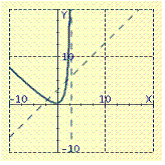Find the graph of the rational function.
A.
B.
C.
D.
E. none of these
Answer: C
You might also like to view...
Perform the addition or subtraction and give your answer in Hindu-Arabic form.
A. 217 B. 113 C. 93 D. 357
Change the Cartesian integral to an equivalent polar integral, and then evaluate.
A. ?(5 ln 5 + 4) B. ?(4 ln 5 + 4) C. ?(4 ln 5 - 4) D. ?(5 ln 5 - 4)
Set up an integral for the length of the curve.y = x5, 0 ? x ? 1
A. 
B. 
C. 
D. 
Answer each question appropriately.If differentiable functions y = F(x) and y = G(x) both solve the initial value problem 
 on an interval I, must
on an interval I, must  for every x in I? Justify the answer.
for every x in I? Justify the answer.
A. F(x) = G(x) for every x in I because integrating f(x) results in one unique function. B. F(x) and G(x) are not unique. There are infinitely many functions that solve the initial value problem. When solving the problem there is an integration constant C that can be any value. F(x) and G(x) could each have a different constant term. C. F(x) = G(x) for every x in I because when given an initial condition, we can find the integration constant when integrating f(x). Therefore, the particular solution to the initial value problem is unique. D. There is not enough information given to determine if F(x) = G(x).



